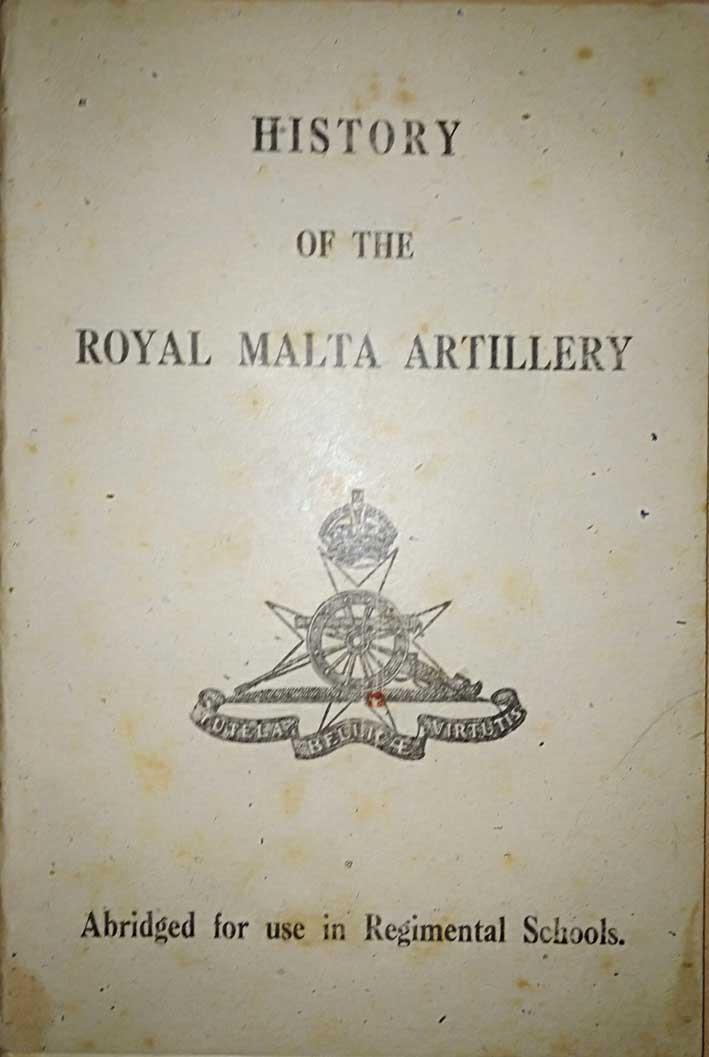When iron-clad naval ships with thicker metal plating were introduced, more powerful guns came to the fore as Malta's coastal defences were upgraded to meet the challenges of modern warfare.
The RMA has a long and chequered history which was best epitomised during the Second World War when heavy and light anti-aircraft guns provided the best defence against German and Italian air attacks during 1940-1943.
The history of the RMA may be divided into different time periods:
1802-1815 - The Malta Provincial Battalions
It was in 1802, in accordance with the Treaty of Amiens, wherein it was stipulated that one half of the garrison of Malta should always be composed of Maltese troops under Maltese officers.
In line with the above Treaty a force of 2,000 Maltese and Gozitans was raised. One battalion of artillery of 300 men, called the Malta Coast Artillery was commanded by Captain Vivian and were divided into three companies of 100 men each and distributed in the various forts around the coasts of Malta and Gozo. Their duties were the armament of the forts and the prevention of smuggling.

History of the RMA
1815-1861 - The Royal Malta Fencible Regiment
The regiment was originally divided into 10 companies as follows:
- 3 companies of Coast Artillery
- 5 companies of Infantry
- 2 companies of Veterans
The three companies of Coast Artillery were placed as follows:
- St Julian's with a detachment at Kaura (now Qawra)
- Marsasciroco (now Marsaxlokk) with a detachment at St Thomas Tower
- St Paul Bay, with a detachment at Torri l-Aħmar
1861-1889 - The Royal Malta Fencible Artillery
This regiment consisted of six batteries with an establishment of 975 all ranks. The regimental headquarters was at Lascaris, with detachments stationed in the forts around the Island.
Egyptian campaign
In recognition of their services in this campaign the officers and men were awarded the Egyptian Medal and the Khedive's Bronze Star, while the regiment was authorised to bear the battle-honour Egypt 1882 on its appointments.

Xmas Card (1st Coast Regiment) circa 1946
On 23 March 1889, the word Fencible was eliminated from the title of the corps; it was thence forward designated the RMA.
1938-1942
There was an extension of the Royal Malta Artillery's expansion between 1938 and 1942. During this period of crisis and war a number of heavy and light anti-aircraft batteries, searchlight batteries and coast batteries were formed.
The 1st Coast Regiment in 1942 was under the command of Lieutenant Colonel A. J. Dunkerley and the Regiment had four Coast batteries.
During the siege of Malta the Coast gunners displayed steadiness in action as their anti-aircraft comrades. For gallant and valuable services rendered by officers and other ranks serving in the RMA, several honours and awards were granted.
In early 1945, the 1st Coast Regiment was reduced to two batteries, the guns to be maintained ready for use. In the last 10 years of its existence the coast artillery was in the care of the Composite Battery, formed in June 1944
St Elmo chapel
The chapel, dedicated to St Elmo or Erasmus (tutelary saint of seaman) stood on its present site, near the Watch Tower, La Torre della Guardia before 1488 for in that year after a Turkish invasion, the Viceroy of Sicily ordered the erection of a Fort (now St Elmo) in place of this tower and the chapel was enclosed within its walls. It survived the 1565 Siege.
In 1942 the east end was restored; the altar was reconstructed from the stones of ruined churches of Valletta and from battlements of the Fort, by personnel of the 1st Coast Regiment Royal Malta Artillery. The candlesticks were made from the brass cartridge cases fired by gunner units against enemy aircraft during the Siege.
On 17 April 1946, the Vice-Admiral, Malta in token of the cordial relationship between the Royal Navy (RN) and the RMA during 1939-45 presented the Regiment with the salvaged ship's bell of HMS Maori sunk in the Grand Harbour in 1942. This is now the chapel's bell.